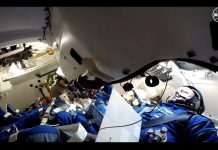Sept. 9 (UPI) — Armed with its workaround drilling technique, the Curiosity rover continues to probe Mars’ Vera Rubin Ridge.
Last week, NASA shared a panoramic photo of Curiosity’s surroundings. The photo showcased Curiosity’s latest drill target, and the ridge that continues to befuddle planetary scientists.
While the latest drill sample hasn’t solved the mystery of Vera Rubin Ridge, scientists were simply relieved to collect and analyze some powdered rock.
Curiosity’s previous two drill attempts were thwarted by rock that proved too hard to penetrate.
Drilling is the only way to determine how hard a rock target is, so Curiosity’s controllers have to make educated guesses about where to drill next. On the rover’s most recent attempt, scientists got it right.
On Vera Rubin Ridge, there’s an overwhelming variety of rocks to choose from. The ridge is characterized by a diversity of colors and textures.
“The ridge isn’t this monolithic thing — it has two distinct sections, each of which has a variety of colors,” Ashwin Vasavada, Curiosity’s project scientist at NASA’s Jet Propulsion Laboratory, said in a news release.
“Some are visible to the eye and even more show up when we look in near-infrared, just beyond what our eyes can see. Some seem related to how hard the rocks are.”
NASA scientists were drawn to the ridge by the strong hematite signal — a mineral that forms in water.
With continued drilling, scientists hope to determine how so many different rocks are held together. It’s possible ancient water flows help distribute a cementing agent throughout the ridge.






